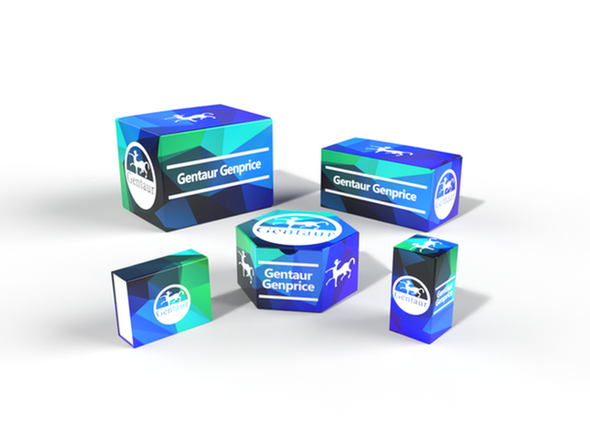Description
CCL4 Antibody | 55-068 | Gentaur UK, US & Europe Distribution
Host: Rabbit
Reactivity: Human, Mouse
Homology: N/A
Immunogen: This CCL4 antibody is generated from rabbits immunized with a KLH conjugated synthetic peptide between 22-48 amino acids from the Central region of human CCL4.
Research Area: Immunology, Signal Transduction
Tested Application: WB, IHC-P
Application: For WB starting dilution is: 1:1000
For IHC-P starting dilution is: 1:50~100
Specificiy: N/A
Positive Control 1: N/A
Positive Control 2: N/A
Positive Control 3: N/A
Positive Control 4: N/A
Positive Control 5: N/A
Positive Control 6: N/A
Molecular Weight: 10 kDa
Validation: N/A
Isoform: N/A
Purification: This antibody is purified through a protein A column, followed by peptide affinity purification.
Clonality: Polyclonal
Clone: N/A
Isotype: Rabbit Ig
Conjugate: Unconjugated
Physical State: Liquid
Buffer: Supplied in PBS with 0.09% (W/V) sodium azide.
Concentration: batch dependent
Storage Condition: Store at 4˚C for three months and -20˚C, stable for up to one year. As with all antibodies care should be taken to avoid repeated freeze thaw cycles. Antibodies should not be exposed to prolonged high temperatures.
Alternate Name: C-C motif chemokine 4, G-26 T-lymphocyte-secreted protein, HC21, Lymphocyte activation gene 1 protein, LAG-1, MIP-1-beta (1-69) , Macrophage inflammatory protein 1-beta, MIP-1-beta, PAT 744, Protein H400, SIS-gamma, Small-inducible cytokine A4, T-cell activation protein 2, ACT-2, MIP-1-beta (3-69) , CCL4, LAG1, MIP1B, SCYA4
User Note: Optimal dilutions for each application to be determined by the researcher.
BACKGROUND: This gene is one of several cytokine genes clustered on the q-arm of chromosome 17. Cytokines are a family of secreted proteins involved in immunoregulatory and inflammatory processes. This protein is similar to CCL4 which inhibits HIV entry by binding to the cellular receptor CCR5. The copy number of this gene varies among individuals; most individuals have 1-5 copies in the diploid genome, although rare individuals do not contain this gene at all. The human genome reference assembly contains two copies of this gene. This record represents the more centromeric gene. [provided by RefSeq].










